
When it comes to wildlife, Laos is one of the most diverse countries in Asia. There are plenty of animals roaming freely, including very rare ones like the Irrawaddy dolphin. While most pose no risk to humans, there are some that can be dangerous and you should be aware of, especially if you like exploring nature. In this article we want to show you the 10 most dangerous animals in Laos, starting with the least dangerous and ending with the most dangerous. Are you ready?
Animal | Habitat | Danger Factors | Encounter Likelihood | Protection Tips |
Tigers | remote forests | apex predator | extremely low | avoid trekking in remote border areas, especially at night |
Scorpions | under rocks, dry places | painful and venomous sting | medium | watch your hands and feet |
Bears | forests, mountains | strong and protective, sharp claws, powerful bite | extremely low-low | make noise while trekking and carry a bear spray |
Crocodiles | rivers, wetlands | very strong bite | low-medium | don't swim in unknown waters, be cautious near riverbanks |
Centipedes | under rocks, wet places | painful and venomous bite | medium-high | watch your hands and feet |
Monkeys | forests, places close to humans settlements | might attack in a group, can be very aggressive, carries diseases | medium-high | don't approach or touch them |
Elephants | forests, grasslands | enormous size and unpredictable | low-medium | maintain a safe distance |
Snakes | forests, grasslands, wetlands, agricultural areas | quick and potentially venomous attack | medium | wear sturdy shoes and watch your step |
Dogs | urban and rural areas | painful bite, can transmit rabies | extremely high | pay attention to the body language, stay calm and confident |
Mosquitos | basically everwhere | can transmit dangerous diseases like malaria | extremely high | use mosquito repellent, wear long clothes, sleep in a safe place with nets |
10. Tigers

The tiger is an apex predator and one of the most dangerous animals any human could encounter. Tigers may not just attack when hungry, but also out of defense, since they’re very territorial animals. Still, for a very simple reason, they’re last on our list. Even Laos has plenty of tiger habitat, they’re most likely extinct. The last tiger in Laos was seen in 2013 and leopards disappeared even earlier in 2004. Why do we still put tigers on our list? Well, it’s not ruled out that tigers from neighboring countries decide to migrate to Laos. If one of the main reasons for their demise, the illegal hunting with snares, can be solved, there is hope for their return. The chances of encountering one in Laos are still practically nonexistent.
9. Scorpions
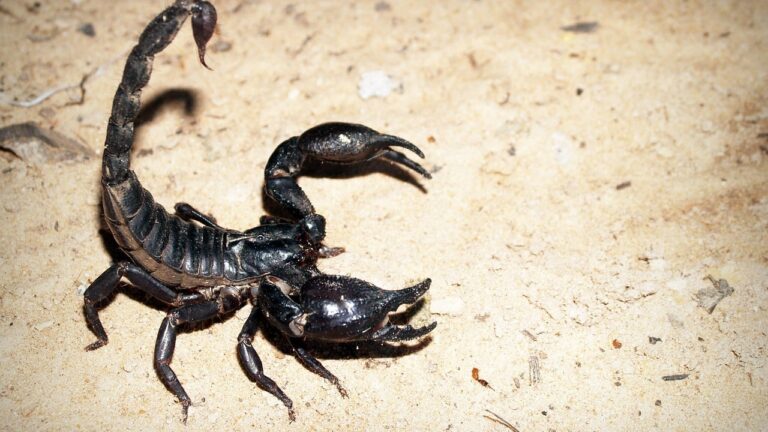
If you’re going to stay in Laos for a longer time and venture into rural areas or even forests, you’ve a good chance of encountering a scorpion. However, there’s no reason to worry, unless you’ve an allergy or a weakened immune system. Unlike some scorpions in other parts of the world, those in Laos are relatively harmless. Their sting may cause pain and discomfort, but is usually not dangerous.
8. Bears
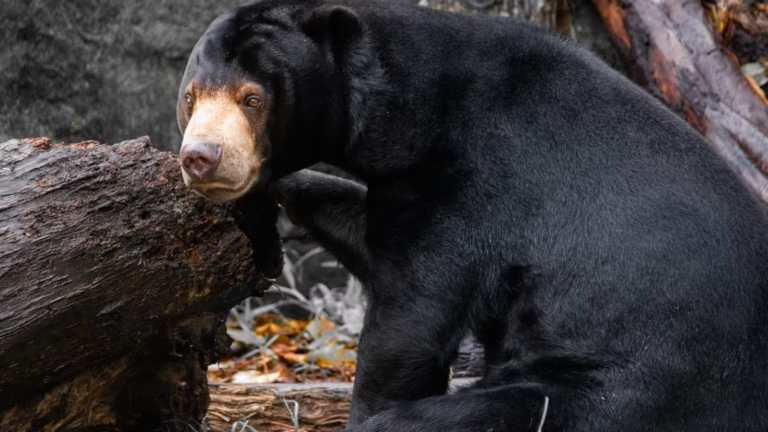
There are two types of bears in Laos: Asiatic black bears and sun bears. Both tend to be more aggressive than some other species and exhibit unpredictable behavior. Only polar bears are considered more dangerous in terms of aggression. Despite this, we decided to rank bears fairly low in our danger rating, because the chance to meet them in the wild is very rare. You’re most likely only going to see a bear in a sanctuary like the Tat Kuang Si Bear Rescue Centre. Such facilities are very important, since bear farms and illegal hunting remain a significant problem.
7. Crocodiles
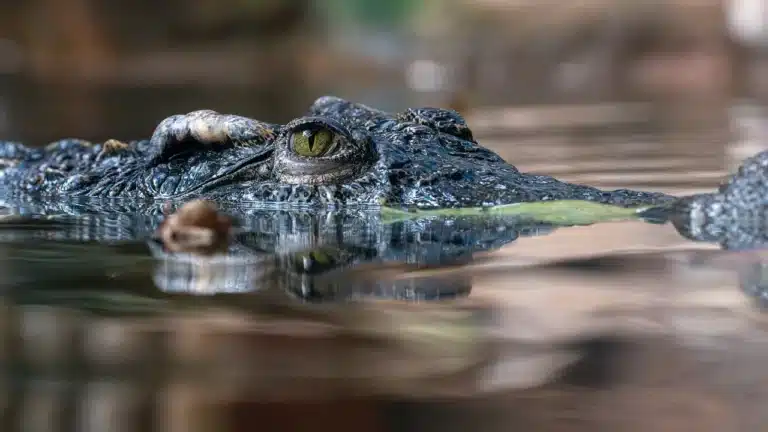
Since Laos is a landlocked country, the risk of encountering a saltwater crocodile is extremely low, even near the border regions. Therefore, you only have to worry about Siamese crocodiles. Siamese crocodiles are critically endangered, freshwater crocodiles and usually not aggressive. That doesn’t change the fact that they can reach up to 4 meters. Nevertheless, they’re still a potential threat and you shouldn’t swim in areas where they live. If you encounter one in the water, try to remain calm, slowly back away, and avoid any sudden movements.
6. Centipedes
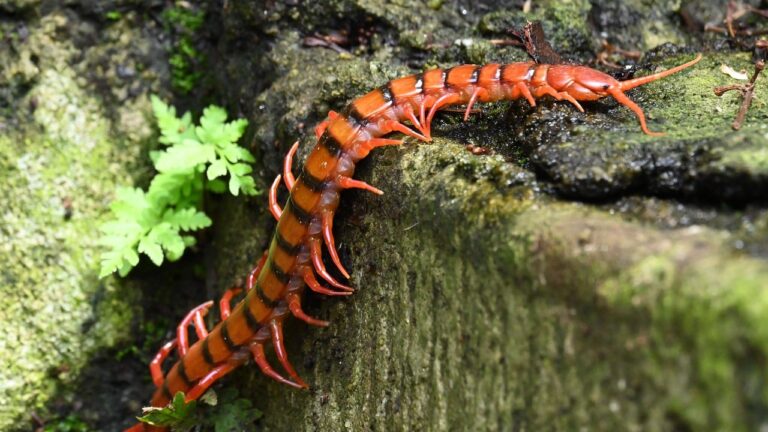
The problem with centipedes is the relatively high chance of an encounter. Especially during the rainy season, you have to be aware, since they might seek shelter inside your accommodation. Outside, they hide under rocks and wet places. With the scolopendra, Laos inhabits one of the most dangerous types of centipede in the world. If you get bitten by a centipede, prepare for intense pain and swelling. Their venomous bite is extremely painful and potentially harmful. In rare cases, it can cause serious health problems. For children, allergy sufferers, and those with weakened immune systems, it can even be lethal.
5. Monkeys
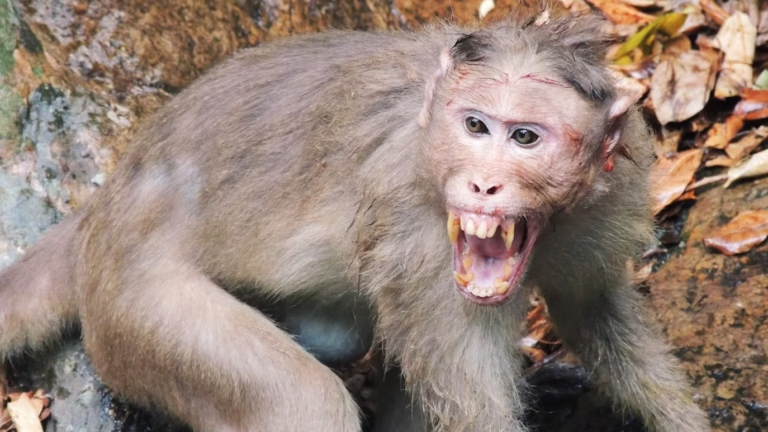
Monkeys are among the most interesting animals in the world, since they display complex social behaviors. Some species even live close to humans and most of the time interact with us peacefully. That doesn’t mean that you should underestimate monkeys, because they can be unpredictable and aggressive if provoked. Provocation doesn’t mean you have to hit them or something similar. Just touching them gently or even staring at them might trigger an attack. The most dangerous monkeys in Laos are not the biggest, but the macaques. Macaques are found in many urban and rural areas. Usually they coexist peacefully with humans. The problem is that they might attack you, even in groups, and carry diseases like hepatitis, herpes, and rabies. Especially rabies is extremely dangerous. If you ever get bitten by a monkey, consult a doctor as fast as possible.
4. Elephants
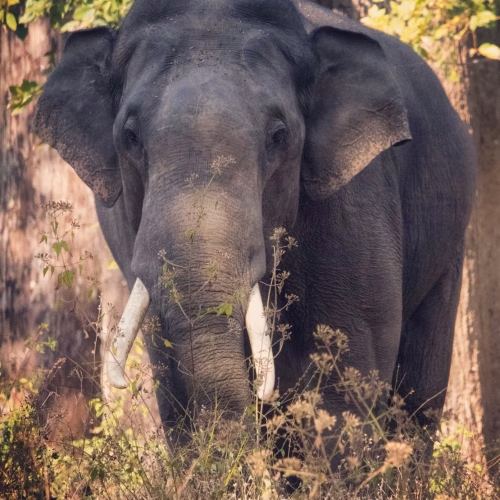
Due to their size, elephants can easily kill any human. Furthermore, they’re unpredictable. Those two reasons and the fact that you can’t just encounter them in the wild, but also in sanctuaries, zoos, or even as working animals make them a significant concern. If you’re interested in interacting with elephants, don’t forget that they’re wild animals and potentially dangerous. In rare cases, even the peaceful elephants in sanctuaries can become aggressive. Elephant attacks on tourists are uncommon, but unfortunately happen.
3. Snakes
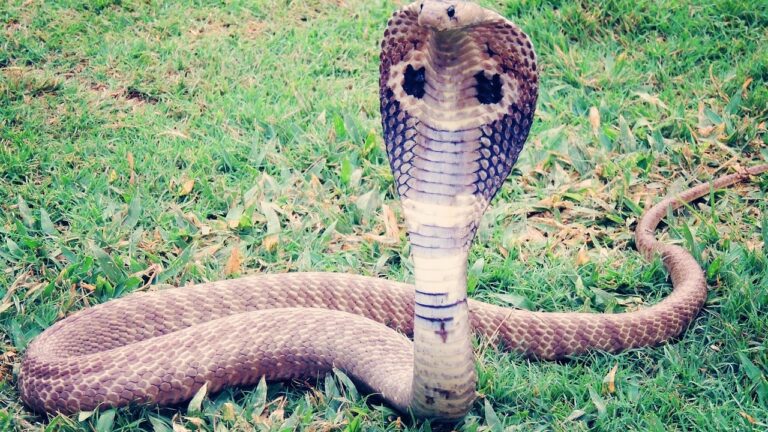
You won’t encounter large constrictors like anacondas in Laos, but there are plenty of venomous snakes to be aware of, such as the banded krait, Malayan pit viper, and king cobra. Many of them are very dangerous, and without quick medical treatment, a bite can be fatal. Since the medical situation in Laos, especially in rural areas, is poorly developed, this poses a significant risk. Still, that’s not the only reason snakes rank so high on our list. Another major factor is the high occurrence of snake bites. According to medical data on snakebite management, there’s no doubt that snakebites pose a serious health problem in Laos. There are up to 1.105 snake bites per 100.000 people, and while not all of them are fatal, the mortality rate is high.
2. Dogs
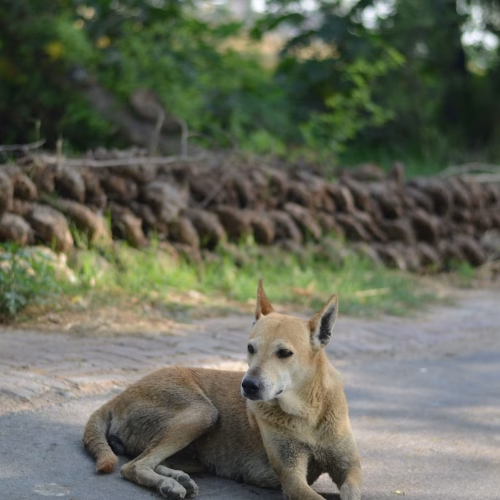
Dog lovers might disagree, but dogs are among the most dangerous animals in Laos. In addition to domestic dogs, there are two types of dogs you can encounter as a traveler – dholes and street dogs. Dholes are usually only found in forests far from human settlements. They’re real wild dogs that live in packs, which makes them potentially dangerous if, for some reason, they decide to attack a human. The real danger comes from street dogs. Street dogs are found in pretty much all urban and rural areas in Laos. While not all of them are aggressive, you might encounter an aggressive one. The problem with street dogs is not just their bite force. While they could seriously injure you, the bigger problem is rabies. Rabies, if not instantly treated with a vaccine, is always fatal. Not all street dogs in Laos have rabies, but since the disease is still widespread it’s important to be cautious.
1. Mosquitos
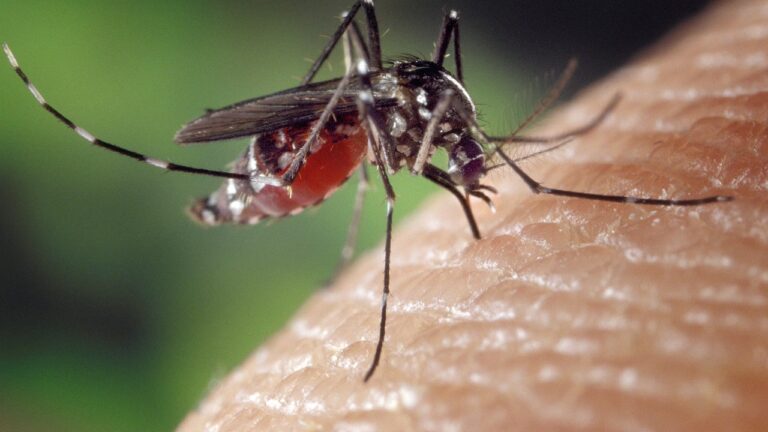
Or number one and the most dangerous animal in Laos is the mosquito. Species like Aedes, Anopheles, and Culex pose a huge risk for anyone traveling or living in tropical regions, since they transmit dangerous diseases like chikungunya, dengue, and malaria. Unfortunately, it’s very difficult to avoid mosquitoes, since they’re basically everywhere, especially near water sources. We highly recommend using mosquito repellents for protection. While they may not provide absolute protection, they significantly reduce the likelihood of being bitten. Additionally, consider using mosquito nets and wearing long-sleeved clothing for extra defense. If nothing helps and you start experiencing symptoms like chills, fever or rash, seek medical attention immediately.
Honorable Mentions

There are a few potentially dangerous animals in Laos that you should be aware of, although it’s important to note that the likelihood of them causing harm is quite low. These honorable mentions include boars, monitor lizards, spiders, and cats. Yes, cats. The reason we mention cats is because they can carry rabies. However, it’s still quite unlikely that you’ll encounter a situation where a sick cat would bite or scratch you. If for some reason it still happens, don‘t wait and immediately consult a doctor. Boars and monitor lizards share a similar risk. While they do have the potential to seriously hurt or even kill a human, such incidents are rare unless you’re actively provoking them. Lastly, spiders. Even the scary-looking ones like the giant huntsman spider are generally not dangerous. Most are unlikely to bite, and even if they do, the consequences would likely only result in mild pain or discomfort.
Do you agree with our list? Please tell us your opinion in the comment section below.
Visa on arrival in Laos: situation in 2025
If you’re planning to travel to Laos, you’re going to need a visa. The good thing is, that in most cases you’re eligible for a visa on arrival and therefore don’t need to apply in advance. However, some things you should know if you want to apply for a visa on arrival in Laos. In […]Best barbershops in Vientiane – where to get your next haircut
In one of our previous articles we already talked about the hair salons in Vientiane, but if you’re a man you’re probably more interested in the barbers in the city. That’s totally understandable, since barbershops cater specifically to the grooming needs of men. Well, we have good news for you: There are some barbers in […]Changing money in Laos – all you have to know
If you’re planning to travel to Laos, you should exchange money. Keep in mind that it’s not allowed to export or import the national currency kip, although most likely no one is going to check or enforce this strictly. In this article, we want to show you everything you have to know about exchanging money […]Massages in Vang Vieng – lay back and relax
As with most places in Southeast Asia, Vang Vieng is a good option to enjoy a traditional massage. That fits perfectly, since most of the activities in Vang Vieng can be tiresome. A massage is a great way to relax and unwind. In our personal opinion, it’s an absolute must if you visit the town. […]From Thailand to Laos – these are your options
Many tourists that come to Laos, went to Thailand first. Therefore, a frequently asked question is, how to get from Thailand to Laos. Since Laos is the neighboring country, the distance between the both countries isn’t too far. To be precise, between Bangkok, the capital of Thailand, and Vientiane, the capital of Laos, is a […]






I’ve lived in Laos for nearly 15 years. I’ve actually seen snakes and scorpions in central Vientiane (the capital), including a king cobra and centipedes. Of course, dogs are everywhere, and because of poverty, few people actually get their dogs vaccinated against rabies. Personally, I’ve never been bitten, but it’s always better to be cautious. I also know of an instance where a local was killed by an elephant at a nearby resort that offered elephant rides. As for crocodiles, dholes, tigers, bears, and even monkeys, I have never encountered any of these, so you would likely have to be in very remote areas to have any possibility of seeing them. As you mentioned, the medical facilities are very basic or non-existent in remote areas, and the roads can make transport to the nearest clinic or hospital extremely difficult. Mosquitoes are indeed everywhere, and I myself have had a mild case of dengue fever. I worry because I’ve heard there are five different strains of dengue, all of them nasty except for the one I already caught, so next time I might not be so lucky. For the most part, snakes are not normally aggressive and will avoid humans. If you do encounter one, just give it space, back off, and it will normally get out of your way.
Thank you very much for this detailed and interesting comment! Much appreciated! I got bitten by a random street dog before, although it was in Thailand and not in Laos. It just sneaked up from behind, took a bite at my ankle, and ran away. Because I was worried about rabies, I took the prophylaxis. I had to get five or six vaccines, including some huge ones and one with horse blood, some kind of serum. I felt really shitty afterward, haha.